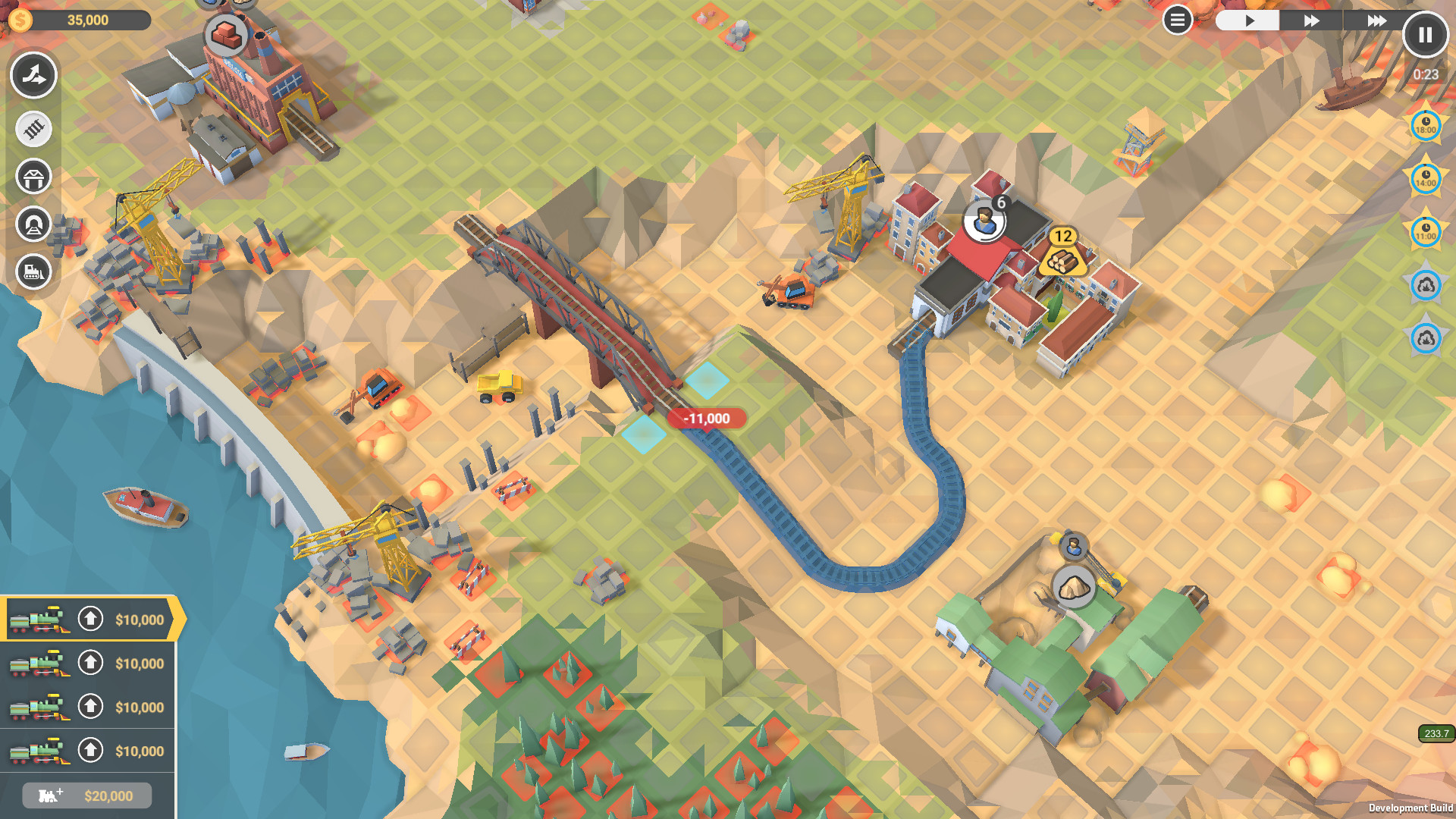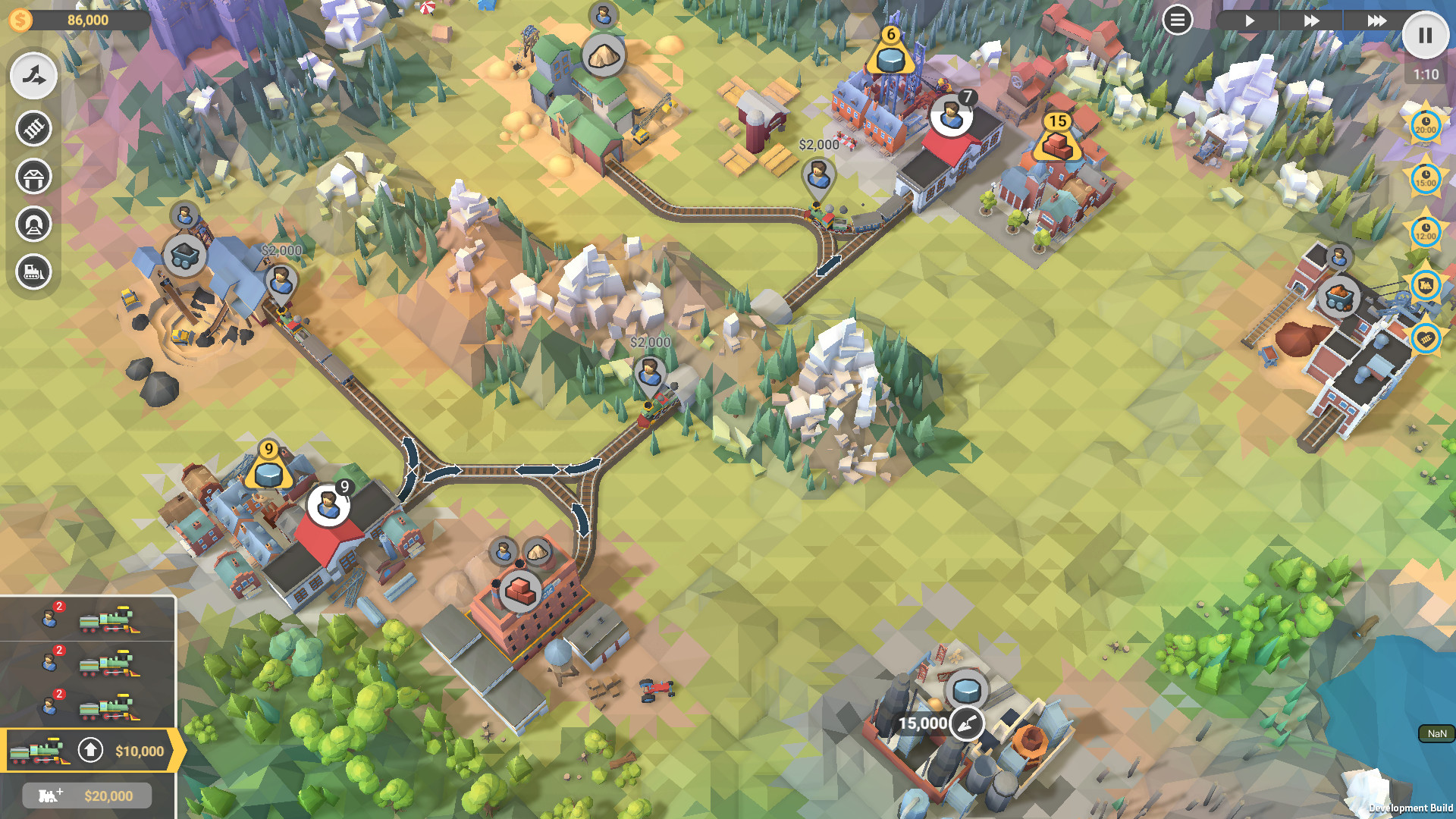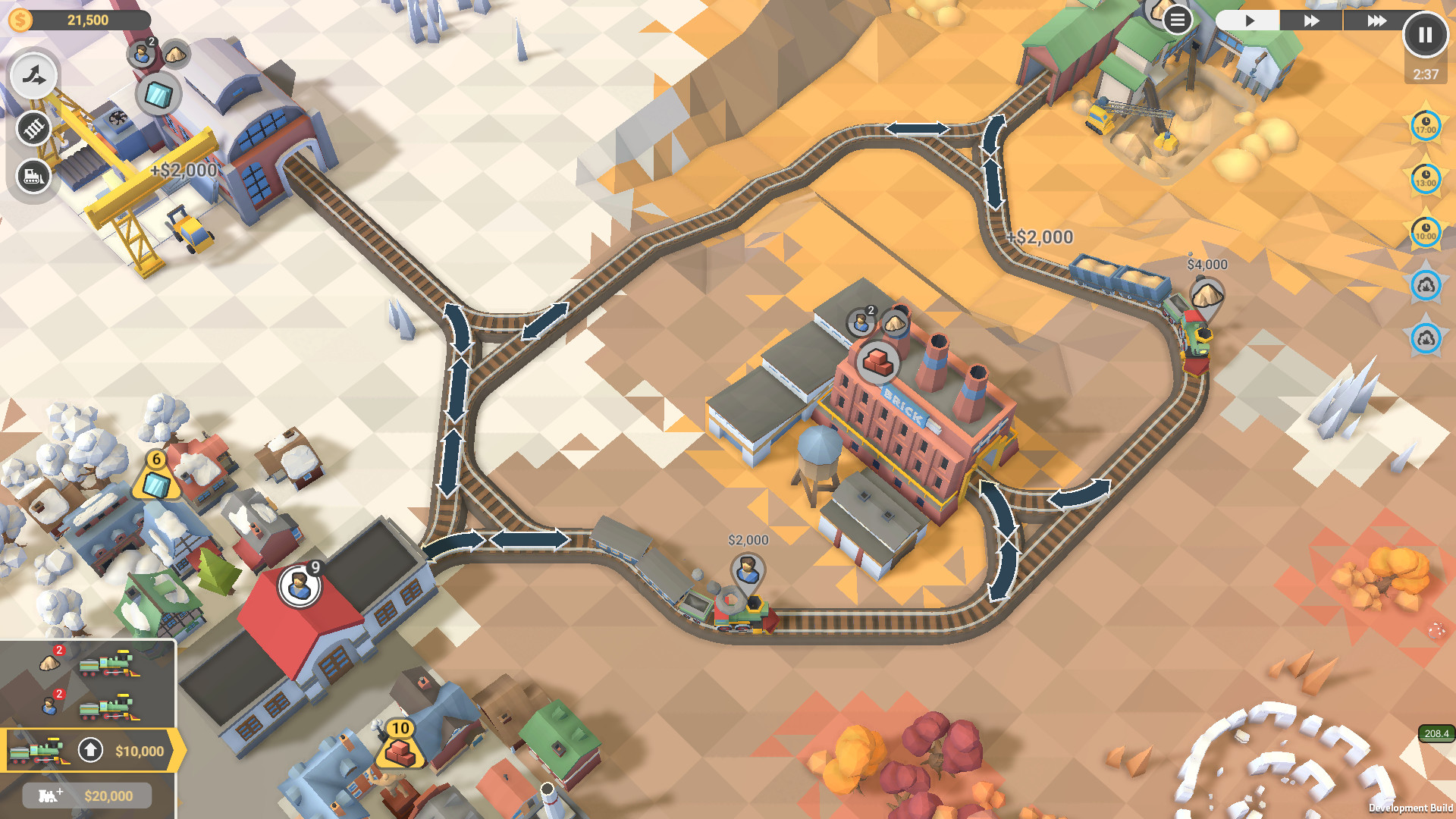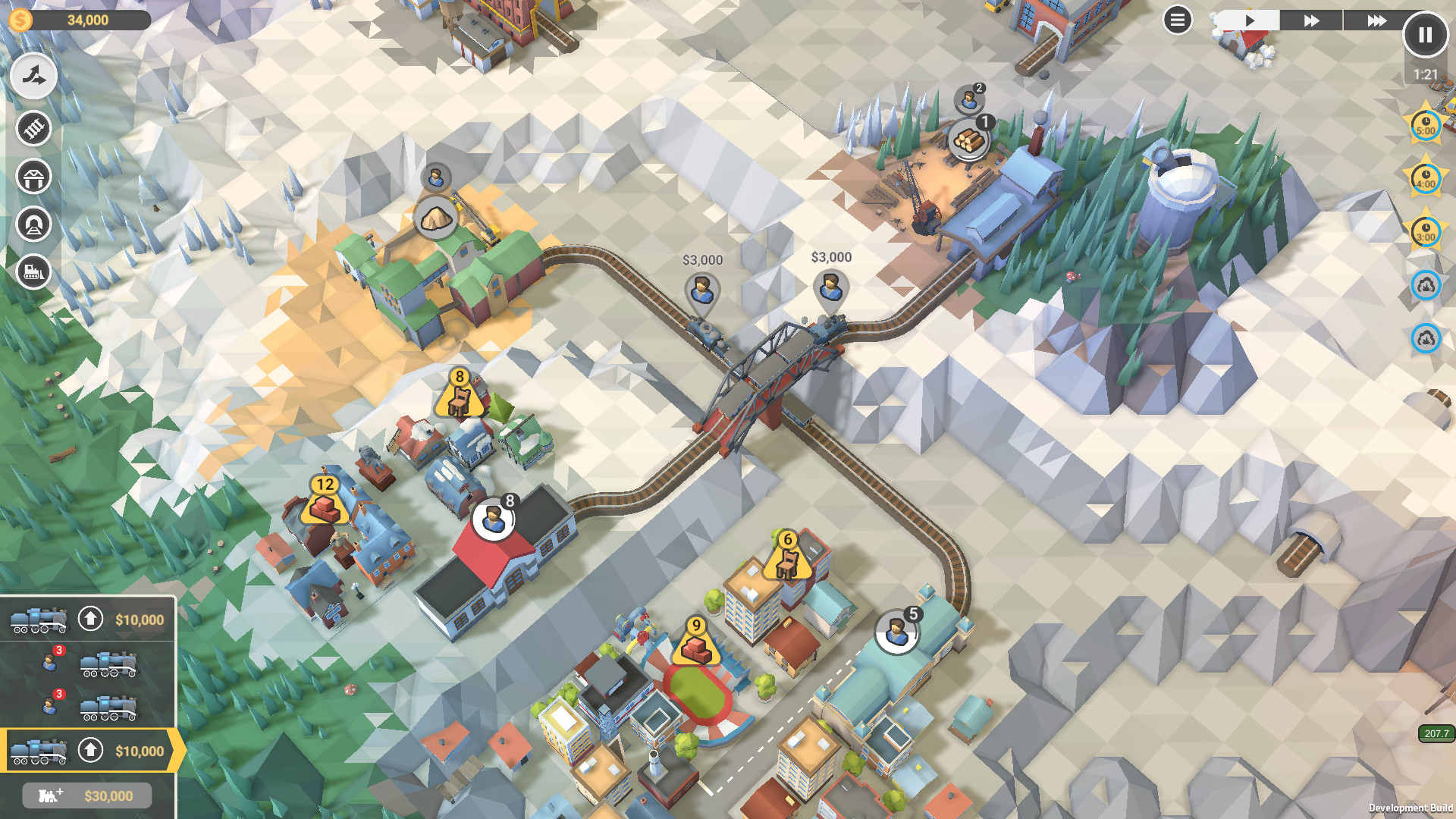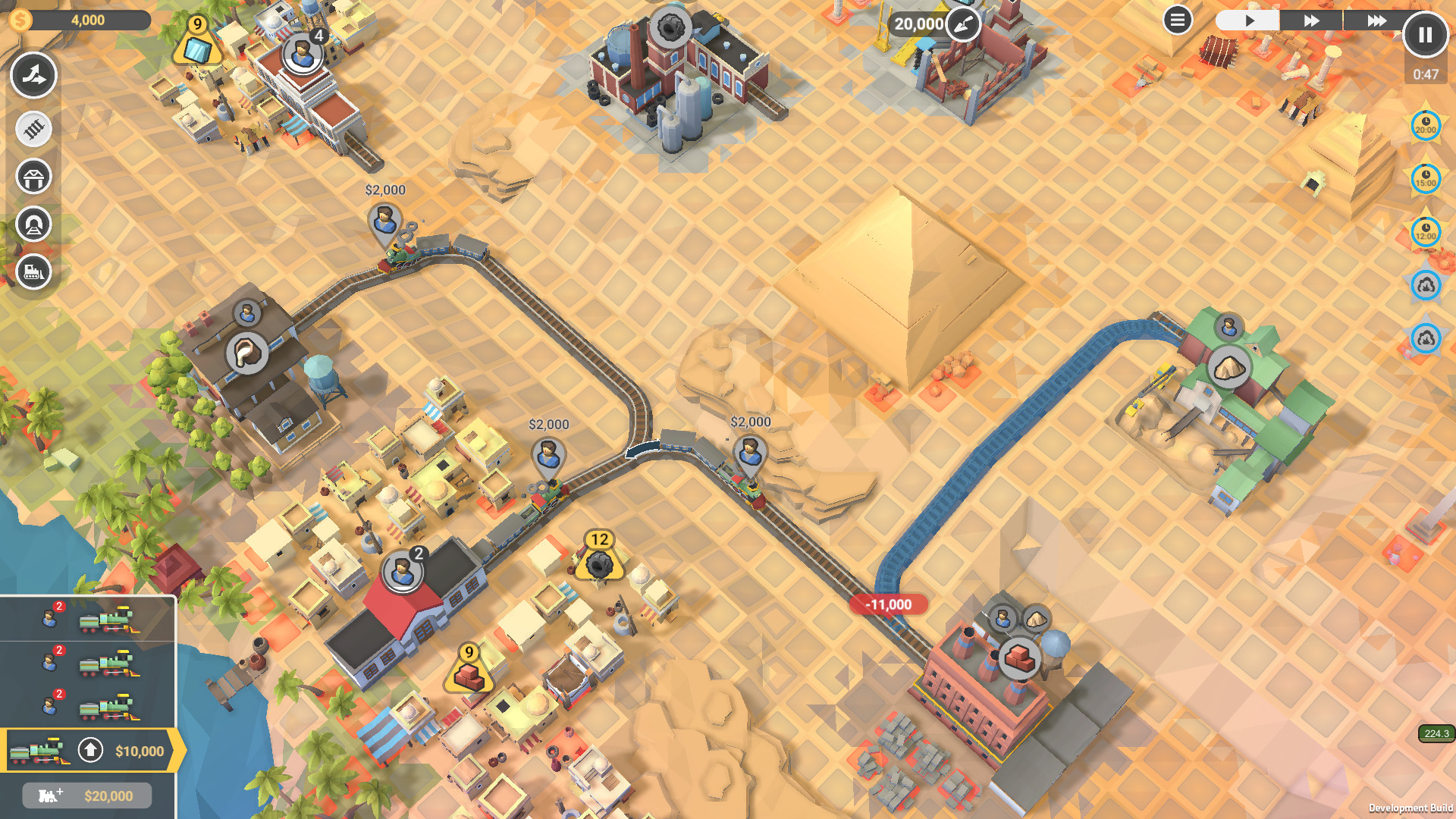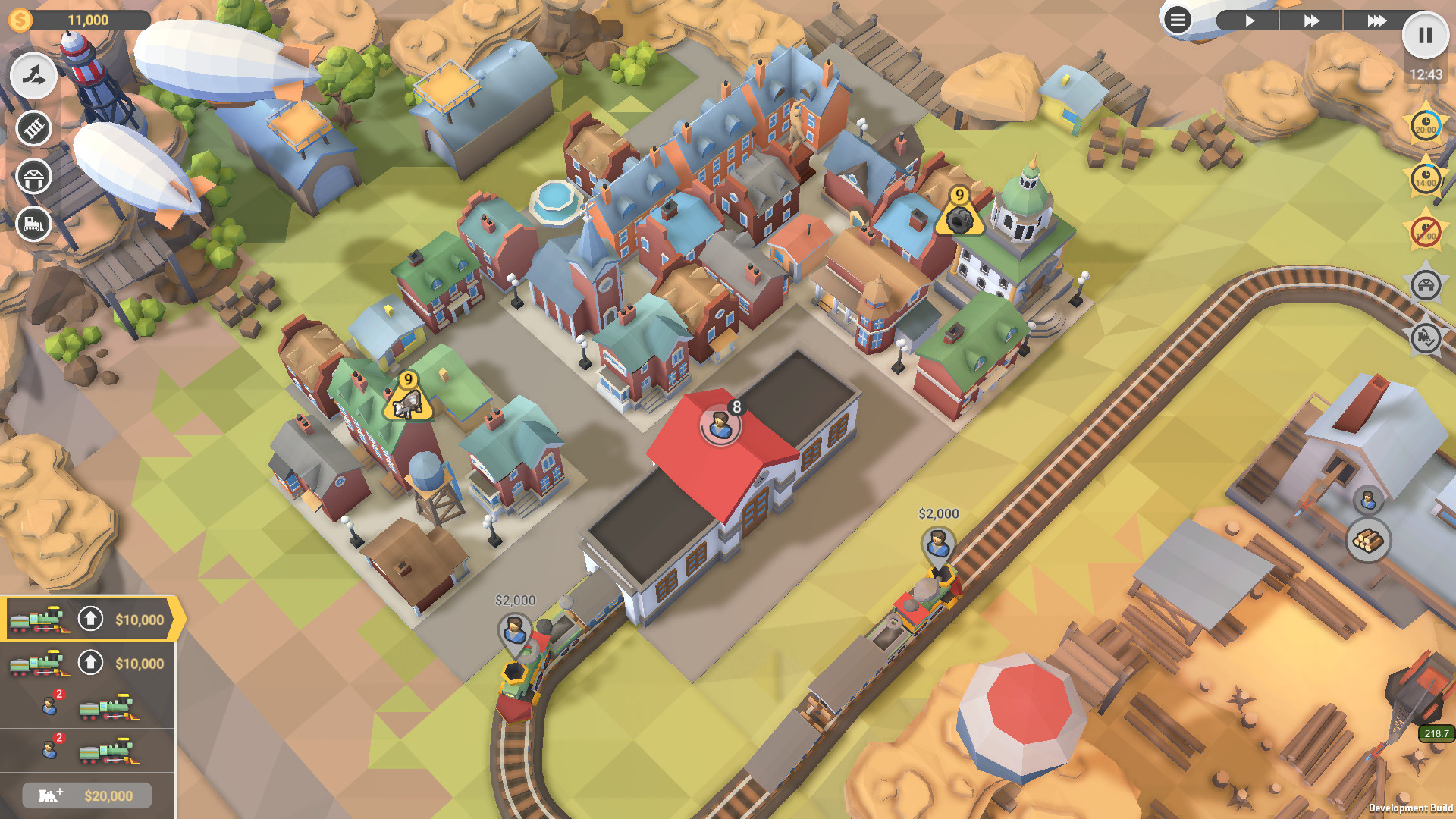
Enjoy engaging and addictive gameplay, combining puzzle micromanagement with tycoon elements.

Discover the history of railroads in elegant low-poly graphics!

Keep your trains running on schedule across 50 levels in Company Mode (*the Early Access version currently offers 20).

Upgrade your stock of locomotives and acquire advanced engines, with 18 models to unlock (*the Early Access version currently features 4).

Produce and ship increasingly sophisticated goods in more than 35 types of train cars (*the Early Access version currently offers 21).

Jump into our Level Editor with Steam Workshop integration and create your own Valleys - or play levels from other players!

Create your own mods with custom locomotives, train cars, industries, and resources from your favorite time or universe.
Good day train lovers! In the last post in our series about the history of locomotives, we talked about the P36 and the DRB Class 41 , two of the best-known machines from the last years of steam-powered engines. From a romantic point of view, those were the golden days of locomotion, when daring entrepreneurs and engineers crisscrossed the world with railroad networks and trains were symbols for freedom and progress. Trains needed to negotiate through difficult terrains with increasingly bigger loads, and at some point, engineers realized that steam locomotives had serious limitations in terms of power. As you know, a steam engine burns combustible (in the case of the locomotives, coal) in order to boil water so as to use the pressure caused by the steam to push pistons. In these engines, heat loss is a huge disadvantage that set serious limitations to their power. So they started working in internal combustion engines which, in its early versions, started using kerosene and gasoline as their fuel, until a nice gentleman called Rudolf Diesel patented his first compression ignition engine.
After some more iterations, these engines improved its performance and reduced its size and weight enough to be mounted in a locomotive. Technically speaking, diesel is not the right term for a type of fuel, but a kind of engine. Anything that can power a diesel engine is called diesel by extension, and funny enough, these prototypes didnt run on petroleum-derived liquids but on peanut oil! Soon, the advantages of diesel engines started to become clear: they could be operated by just one person, where at least two were needed in the case of steam engines; a single crew could control many locomotives in a train, thus increasing dramatically its load capacity when needed. Diesel engines can be started and stopped almost instantly which means shorter and easier stops with zero fuel cost and no cooldown times. They needed less maintenance, could work in freezing cold, were easier to repair By 1925 there were already diesel locomotives implemented in the US, and they started spreading slowly to South America and Europe. The Second World War practically stopped the building and adoption of diesel engines, but when it passed, the whole world started enthusiastically adopting them. From the 70s onward, they became the new standard until the introduction of electric trains.
Today were going to start with one of the first post-Second World War diesel locomotives: the TE3 (3 in Cyrillic alphabet), built in the USSR for the first time in 1953.
The TE3
 (Photo from Wikipedia )
(Photo from Wikipedia )During the Second World War, 70 RSD-1 diesel locomotives, designed by the American Locomotive Company, were shipped to the USSR to be used in ordinary line service. Also, these engines were shipped to Iran for use on the Trans-Iranian Railway. They were diesel-electric, that is, they burnt fuel to produce electricity, and that electricity, in turn, powered the traction motors. When the war ended the Soviets kept many of these engines, and Stalin ordered to reverse-engineer them to adapt them to the metric system and Soviet norms and regulations. Thus was born the TE1, which was pretty much a knockoff of the RSD-1; in 1953 they started prototyping the third iteration, and three years later the TE3 entered mass scale production.
The TE3 is a CoCo+CoCo machine, which means (these wheel arrangement notations are crazy) that it had two units with two six-wheeled bogies (a chassis with a wheelset) with all axles powered, with a separate motor per unit. Its a common enough wheel arrangement, most suited to heavy freight work because of its good traction. Lets remember the harsh climate of the USSR, where ice and snow were not precisely uncommon this locomotive surely made use of the traction provided by its extra wheels!
Its main weakness was its difficulty to work with variable loads, which lead to constant power cuts, as well as its tendency to overheating resulting in water losses from the cooling circuit. When this happened in water-deprived regions of the USSR, engine drivers were forced to use diesel as coolant which, as you surely imagine, its a fire waiting to happen. In spite of this, the TE3 became rapidly popular, and in time it became the most widely spread locomotive in the USSR. Almost 6,800 were built until it went out of production in 1973.
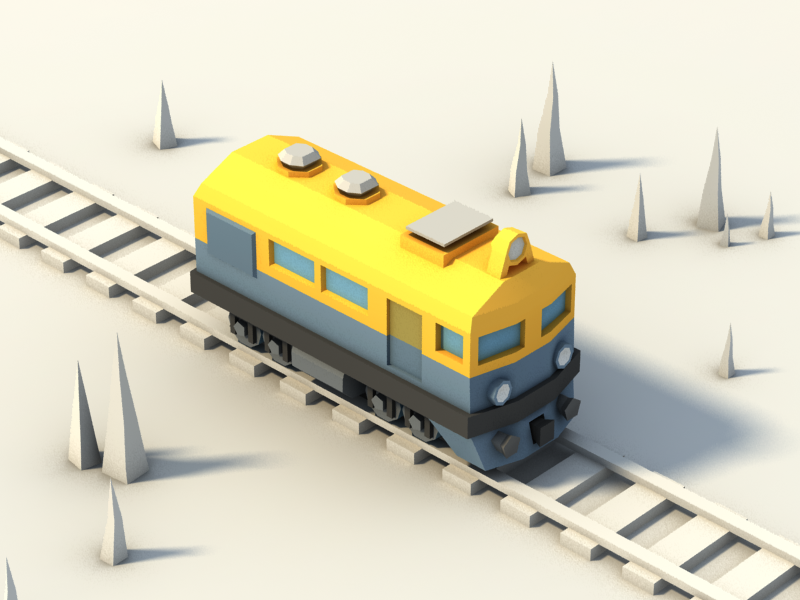
Our in-game version is this locomotive with a similar sturdy and pragmatic design a no-nonsense machine that will get you and your load there through snow, ice and sleet. The plow, as well as the frontal lights and lantern, will surely remind you of the TE3.
Thats all for today! In the next entry of this series, were traveling to the other side of the Iron Curtain to learn more about a couple of American and British diesel locomotives.
Minimum Setup
- OS: Ubuntu 12.04+ or SteamOS+
- Processor: 2.2 GHz CPUMemory: 2 GB RAM
- Memory: 2 GB RAM
- Graphics: ATI Radeon HD 2400 or NVIDIA GeForce 7600
- Storage: 1 GB available space
Recommended Setup
- OS: Ubuntu 12.04+ or SteamOS+
- Processor: 2.2 GHz CPUMemory: 4 GB RAM
- Graphics: NVIDIA GeForce GTX1050 Ti or higher
- Storage: 1 GB available space
[ 6422 ]
[ 4456 ]
[ 2906 ]

